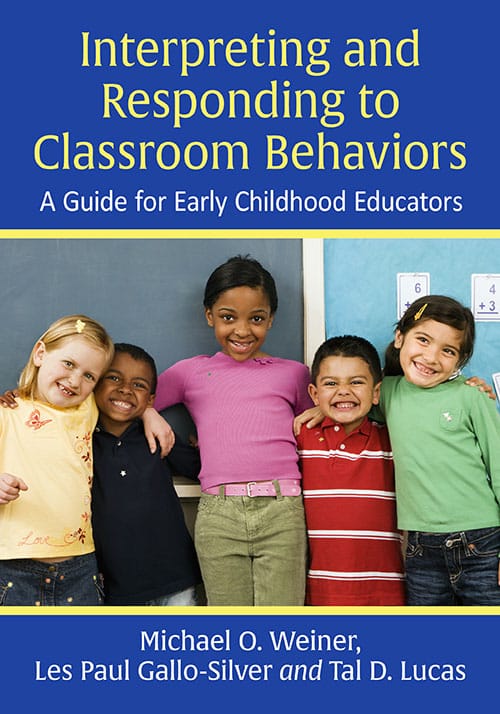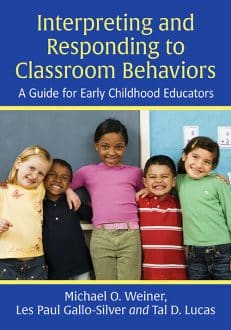Interpreting and Responding to Classroom Behaviors
A Guide for Early Childhood Educators
$39.95
In stock
About the Book
“I spend all my time with this kid!” is a typical teacher complaint when challenged by a young child who disrupts the classroom with rebellious, impulsive, worrisome or odd behaviors. It is vital that teachers gain the skills to holistically decipher and respond to these complex classroom situations. By addressing the underlying meanings that motivate children’s behaviors, teachers increase the opportunity for change within the classroom setting Focusing on communication, this book discusses practical ways to apply child developmental theories to help address common classroom situations, problems, and worries. It identifies new frameworks and rationales, such as the troubling child, the testing child, the worrying child, and the hiding child; describes the unique aspects of these children’s communication; and offers an easy-to-use language for successful teacher intervention. It also provides an adaptable, week-by-week planning and intervention structure as a way of creating some balance between practicality and theory.
About the Author(s)
Bibliographic Details
Michael O. Weiner, Les Paul Gallo-Silver and Tal D. Lucas
Format: softcover (7 x 10)
Pages: 399
Bibliographic Info: 27 photos, appendices, bibliography, index
Copyright Date: 2021
pISBN: 978-1-4766-7375-2
eISBN: 978-1-4766-4273-4
Imprint: McFarland
Table of Contents
Acknowledgments vi
Preface 1
Introduction 3
List of Figures and Tables 9
List of Challenging Behaviors 12
Part One: A Different View of the Children in Your Classroom
1. Children in the Round: A Holistic Approach to Understanding Children 16
2. Who Needs a Diagnosis, Anyway? Understanding Behavior as Communication 28
3. A Child’s Communication Scaffolding 43
Part Two: The Children Communicating in Your Classroom
4. The Child Who Is “Troubling”: Loud and Over Reactive 56
5. The Child Who Is “Testing”: Loud and Under Reactive 71
6. The Child Who Is “Worrying”: Quiet and Over Reactive 85
7. The Child Who Is “Hiding”: Quiet and Under Reactive 103
Part Three: Pulling Back the Curtain on Specific Communicative Behaviors
8. A Week-by-Week Guide for Behavior Assessment, Prioritization, and Planning 122
9. Distractibility, Daydreaming, and Attention-Related Issues 129
10. Elopement and “Moving Away”–Related Issues 158
11. Excessive Clowning 182
12. Aggression, Bullying, Fighting, Out-of-Control Temper 196
13. “Hyperactivity” 223
14. Difficulty Observing Personal Space and Other Boundary Problems 245
15. Not Speaking 275
16. Toileting Accidents and Toilet-Related Issues 299
17. Upsetting Artwork, Writings, and Play 317
Conclusion: Keeping Your Balance 363
Appendix A: The Troubling Child Worksheet 371
Appendix B: The Testing Child Worksheet 373
Appendix C: The Worrying Child Worksheet 375
Appendix D: The Hiding Child Worksheet 377
Appendix E: Self-Fulfilling Prophecies 379
Bibliography 383
Index 389
Book Reviews & Awards
“The use of the four child communication personas to help inform a teacher’s response to classroom behaviors and the Model of Understanding Child Behavior (AURA) are both unique and valuable ways of looking at communication and behavior…. [T]his book will be an asset to educators who … are Looking for a new way to investigate the why behind a student’s behavior.”—Janice Eisenberg, school counselor





